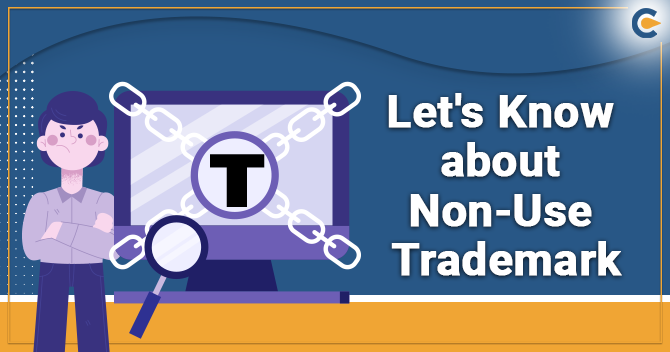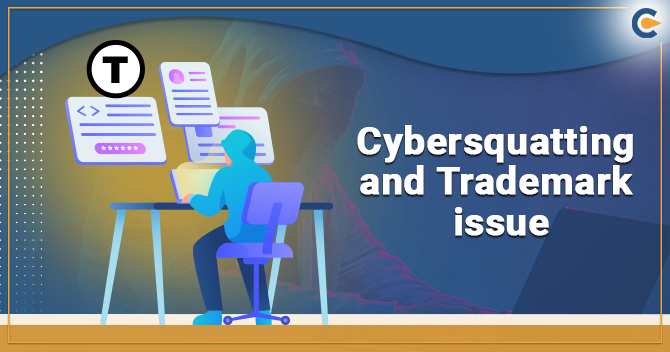The pandemic has toughened the belief that there are qualms surrounding us at all stages, levels and aspects of life. In the business world as well, corporations may have been shut down, cease to operate or forced out of business. In such circumstances, what happens to the trademarks? This article answers questions on trademark falling into Non-Use Trademark and the consequences on trademark after pandemic.
What is the General Validity of a Registered Trademark in India?
A trademark in India is approved for a time period of 10 years from the date of registration of stated in the trademark certificate. Though, if a trademark proprietor has not used the trademark for a period of more than 63 months, then he/she may lose his/her rights over the trademark in such rectification or opposition proceedings.
How the Right to Use the Trademark is granted?
A registered trademark offers the right to protect the identity of a business. First we need to understand how a business entity can acquire the right to use a trademark in India –
- Once the entity submits the registration application to the trademark office, the examination of the details provided in the application would begin. This is to verify factual details provided in the application by the entity. This includes filing trademark in the right class, with other precise details.
- After the acceptance of the trademark registration application, the registrar will publish the proposed mark. This means printing of the trademark symbol or name or both in the Journal of Trademarks.
- At this stage, the logo or name or both with trademark registration has advised the Trademark Journal to welcome objection, if any.
- If there are no other objections raised on the proposed mark, the application is accepted. Trademark would then be marked as ‘Registered’. This is when the applicant of the Trademark can start using the ® symbol next to the name or logo.
By when should one start Using the Registered Trademark?
While there is no particular time limit for using the trademark, one must start using it at the earliest. This implies that even before the trademark registration certificate is granted, the trademark can be used.
An entity can use its trademark within and outside the corporation. This includes printing the trademark on hoarding, the official website of the corporation, notices, internal infrastructure of the corporation and its advertisements.
Does Renewal of Trademark Means that Trademark is Permanent?
No, this does not mean that the trademark is permanent. The trademark is not granted for lifetime. The trademark laws states that a registered trademark must be renewed every 10 years.
A trademark can also get removal if the trademark is not used. Therefore, a corporation not using its registered trademark for a constant period of 5 years from the date when trademark was registered, the corporation would lose rights over the trademark.
How you can remove Non-use Trademark?
Anyone can apply for removal of trademark. This means that not just the competitors but also any other individual can apply for removal of your trademark.
Grounds for Removal of a Registered Non-use Trademark
A trademark removal can be done for any of the following reasons:


No Bonafide Intention
If a trademark has been filed casually, without the purpose that it be supposed to be used regarding those goods or services, it can lead to removal.
What meets the criteria as “bonafide use” of a trademark?
As per the legal provisions, bonafide use of a trademark means – sincere and legitimate use. So, a corporation using a trademark in its credentials and communications with the public would amount to “bonafide use”. This is to judge by usual commercial principles.
Non-use Trademark for Five Years
If a corporation does not use a trademark for a continuous period of 5 years from the date of registration, it can be removed from the registry of trademark. This phase of five years is started from the date on which the trademark was registered formally.
Under what Circumstances a Trademark would not be removed?
The trademark law provides three situations where it would not be removed despite non-use trademark. These are –
- When an applicant plans to form a company and obtain registration under the Companies Act, 2013. Therefore, non-use while waiting to use the trademark for that company after registration is excusable.
- Title-holder of the mark intends it to use by another person. Therefore, if he/she is waiting for the trademark to get registered in the name of that person, the trademark will not be removed.
- Special commercial circumstances – If the non-use trademark is special situations prevailing and not due to the owners’ mistake. For instance, restrictions on the use of a particular trademark forced by any law. Some corporations may have to wait for domestic or international approvals. Hence, in the interim period, corporation may have an excuse from using the trademark.
Partial Removal of a registered trademark
Partial removal refers to removing some element of the trademark.
- If two trademarks are similar in their registration, one proprietor may apply to the registrar to remove the other resembling a trademark that has fallen into non-use.
- On such an application by that person for removal of the other trademark due to its nonuse, the trademarks tribunal can also impose limitations on use of the registration of the first-mentioned trademark.
Rectification on Grounds of Non-use Trademark
Rectification of a trademark is a proceeding in which a party tries to remove a registered trademark from the register of trademarks. Section 47 of the Trademarks Act[1] has stated two scenarios concerning removal of a registered trademark, which are as follows;
- If it is established that the mark was registered with no bona fide intention of use on part of the proprietor. Usually, as part of trademark searches that are conducted, there are various applications filed in all the 45 classes when the trademark is in fact used for one or two classes only. This is a cynical registration and the Court has held in a variety of cases that such registrations must not be encouraged.
- If the mark is not used by the proprietor for a continuous period of 5 years from the date of registration and three months before applying for registration. So in effect, if the trademark is not used for a period of five years and three months, then any person might file for rectification proceedings.
Therefore in the first type of case if a person can prove that the applicant had no intention of using the trademark, they can appeal to cancel the trademark, and in the second situation, even if there was some preliminary usage, for a continuous period of five years after registration of the trademark, if the mark had not been used an application for rectification can be filed.
Conclusion
If the mark owner hasn’t used the mark for more than 5 years and 3 months, they may lose their trademark rights in such modification proceedings as well as opposition proceedings. While the onus to prove non-use trademark is generally on the person who applies rectification, the obligation might be shifted to the trademark owner in the hearing. If he fails to approve usage, his mark will be liable to be removed from the register. This is what was held by the IPAB in a recent case where the trademark owner was asked to provide evidence of usage. The owner provided a document listing registrations in various countries as usage rejected by the IPAB. The trademark was ordered to be removed as the evidence of usage of trademark was not sufficient.
Read our article:What is the Importance of Notarization of Trademark Assignment?











